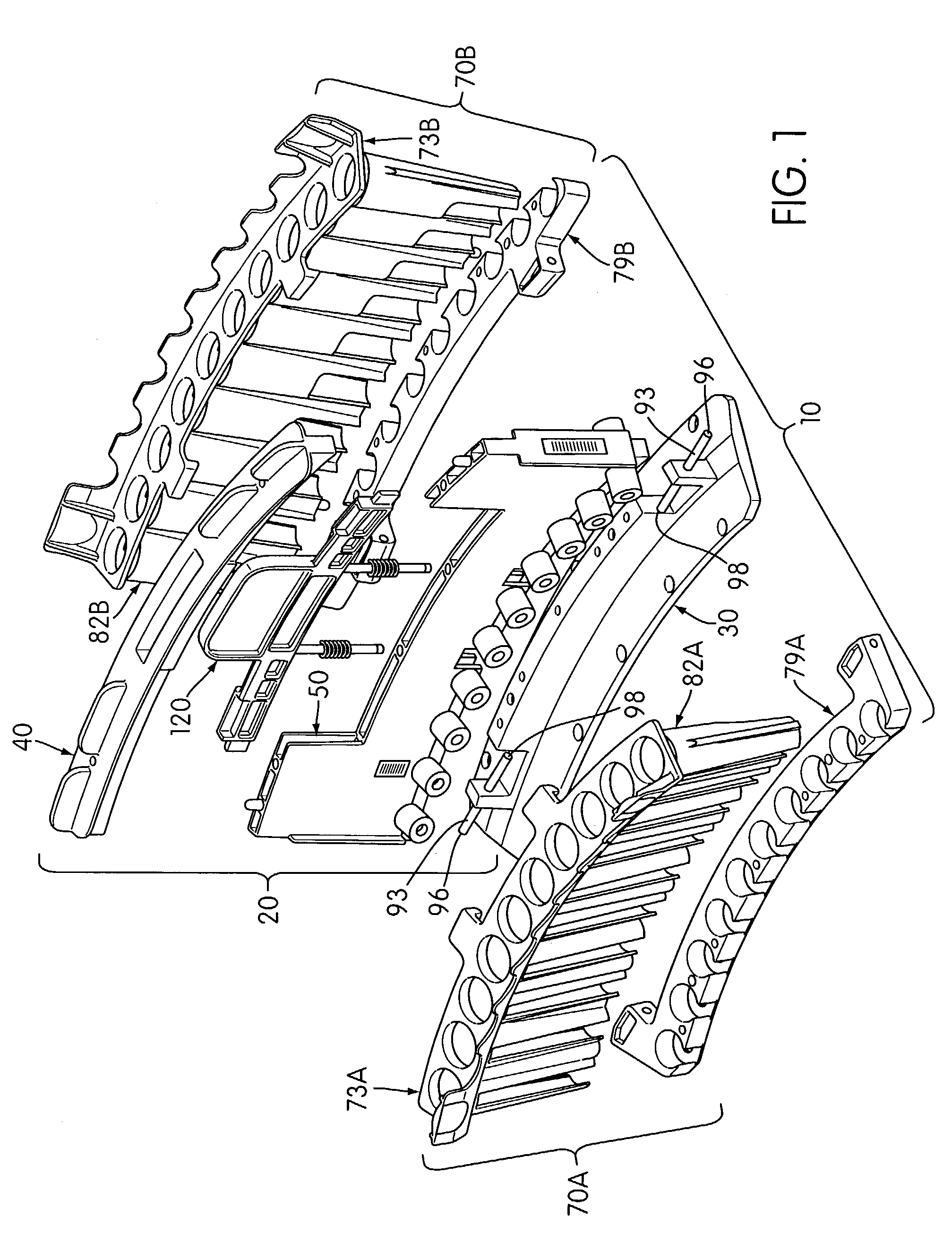Sample carrier having releasable locking mechanism
a locking mechanism and sample carrier technology, applied in the field of sample carriers, can solve the problems of exposing practitioners to possible repetitive motion injuries and the difficulty of controlling sample carriers, and achieve the effect of limiting carryover contamination and more accurate pipetting
- Summary
- Abstract
- Description
- Claims
- Application Information
AI Technical Summary
Benefits of technology
Problems solved by technology
Method used
Image
Examples
Embodiment Construction
[0049]While the present invention may be embodied in a variety of forms, the following description and accompanying drawings are merely intended to disclose some of these forms as specific examples of the present invention. Accordingly, the present invention is not intended to be limited to the forms or embodiments so described and illustrated. Instead, the full scope of the present invention is set forth in the appended claims.
[0050]With reference to the figures, a preferred sample carrier 10 of the present invention is shown alone or in combination with a drip shield 200 for protecting against cross-contamination between sample tubes 300 carried by the sample carrier and for limiting vertical movement of the carrier when test sample is being removed from any of the sample tubes. Sample carriers 10 of the present invention are preferably used in combination with sample tubes 300 having sealed caps 310 which can be penetrated by conventional plastic pipette tips. (The seal is indica...
PUM
| Property | Measurement | Unit |
|---|---|---|
| distance | aaaaa | aaaaa |
| elastomeric | aaaaa | aaaaa |
| shape | aaaaa | aaaaa |
Abstract
Description
Claims
Application Information
 Login to View More
Login to View More - R&D
- Intellectual Property
- Life Sciences
- Materials
- Tech Scout
- Unparalleled Data Quality
- Higher Quality Content
- 60% Fewer Hallucinations
Browse by: Latest US Patents, China's latest patents, Technical Efficacy Thesaurus, Application Domain, Technology Topic, Popular Technical Reports.
© 2025 PatSnap. All rights reserved.Legal|Privacy policy|Modern Slavery Act Transparency Statement|Sitemap|About US| Contact US: help@patsnap.com



